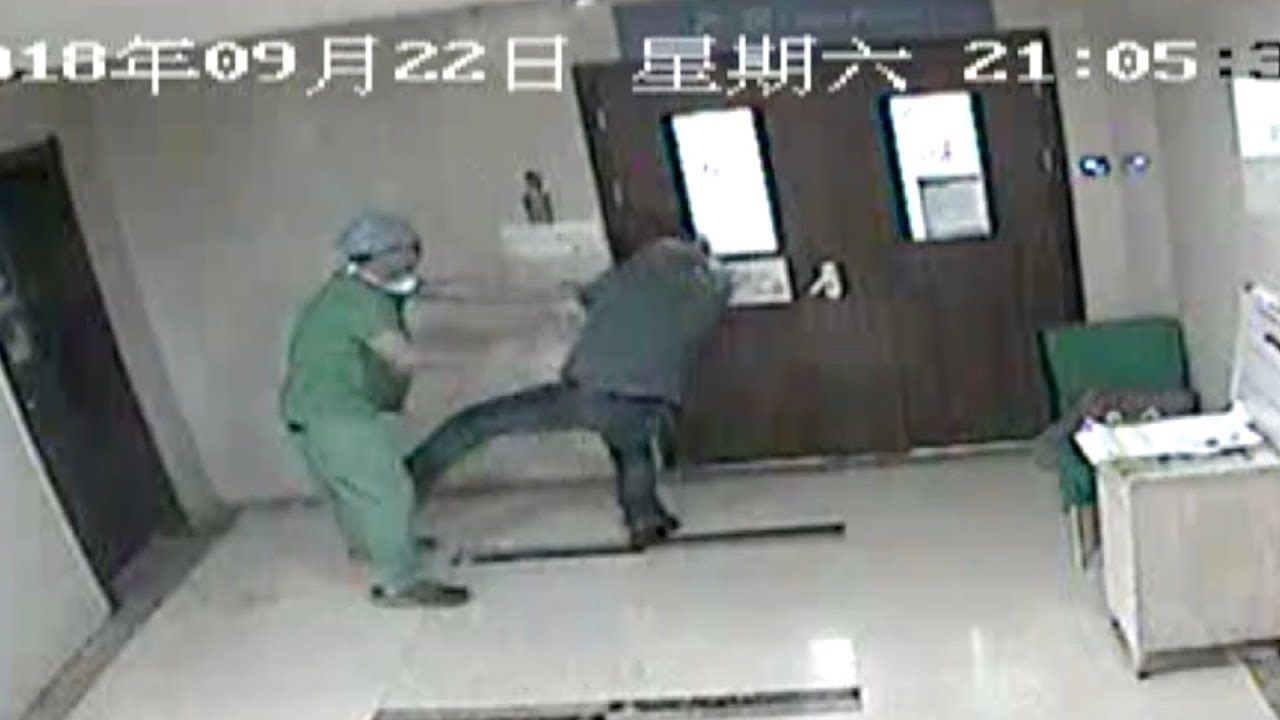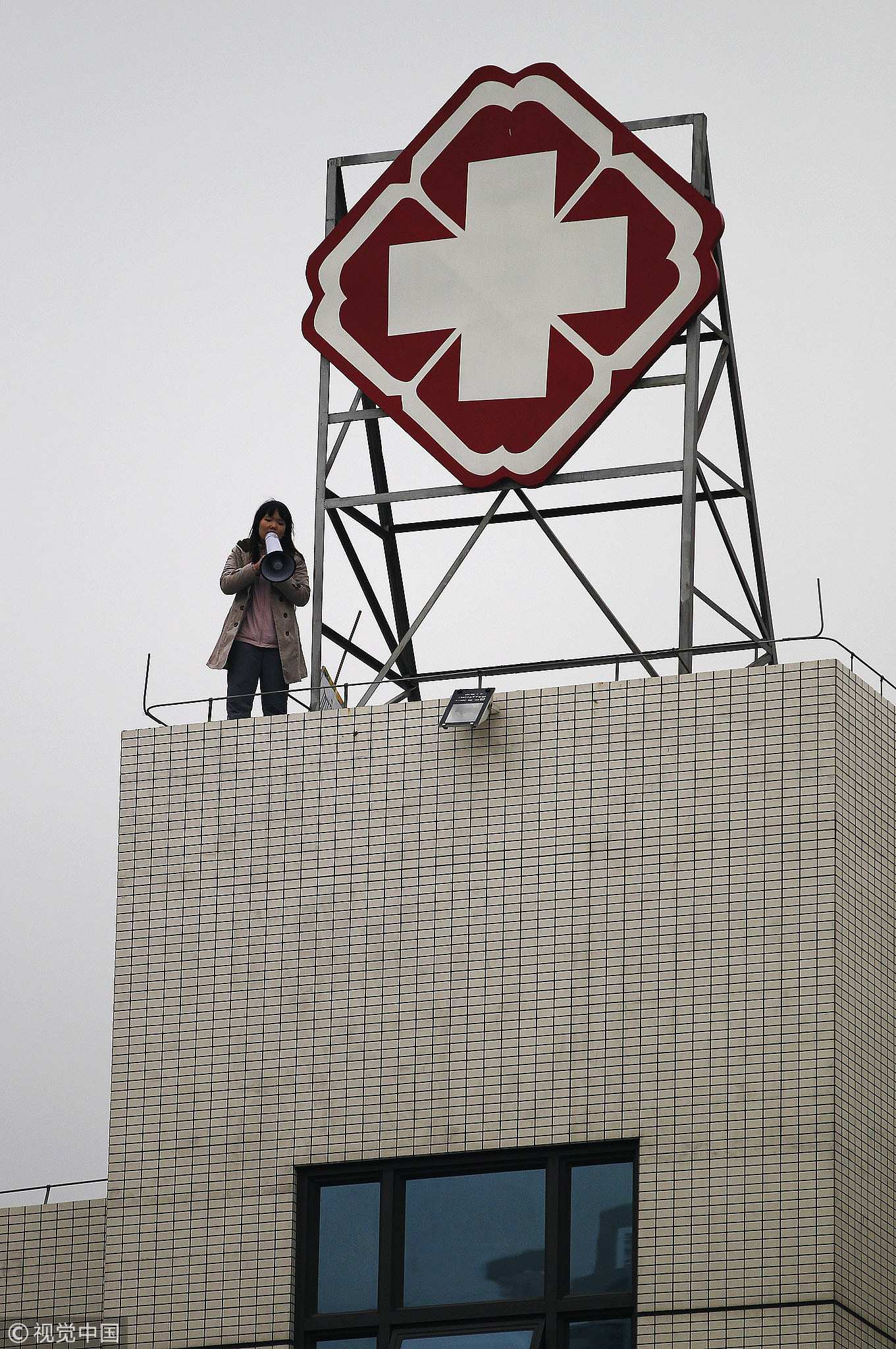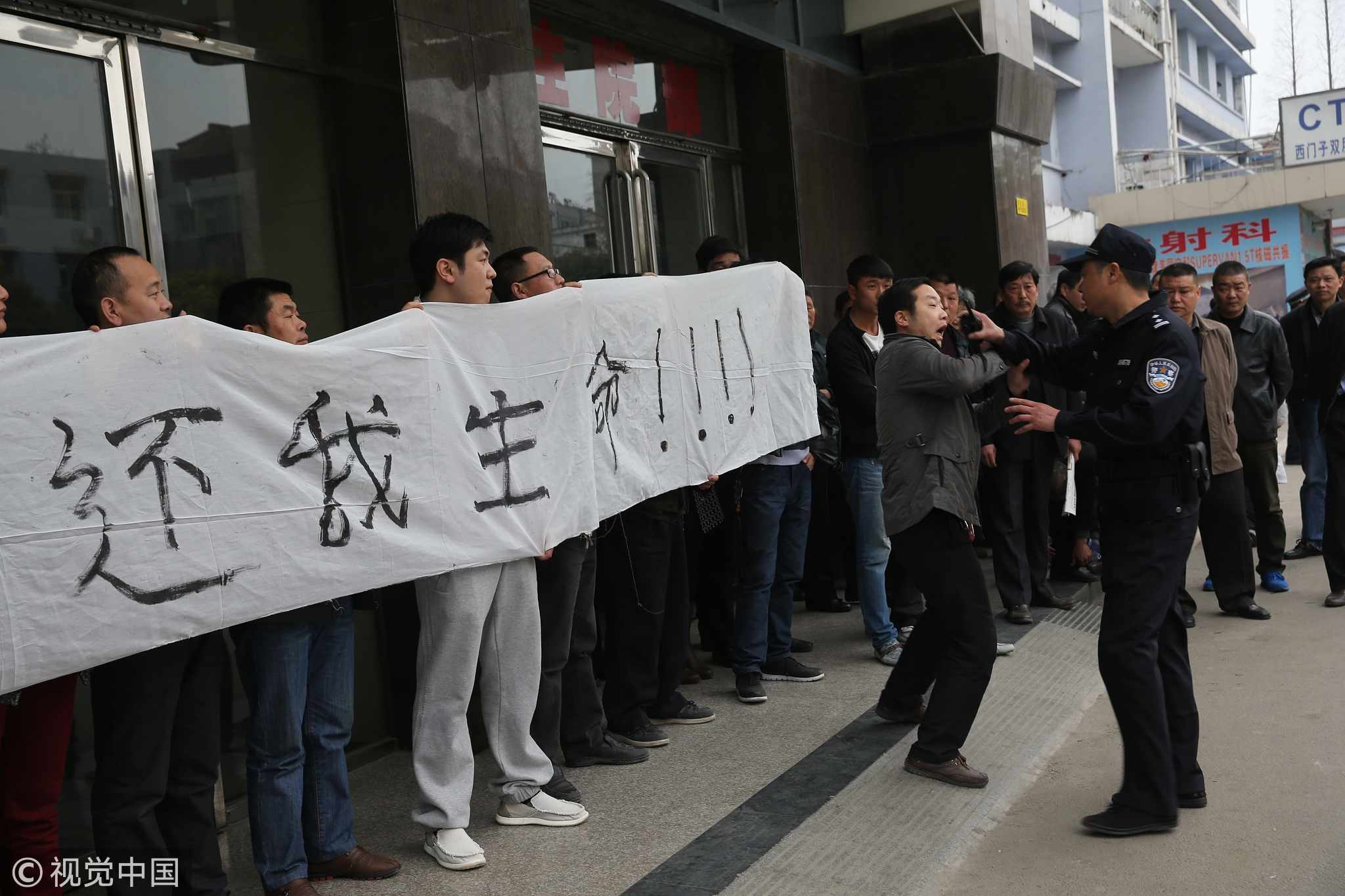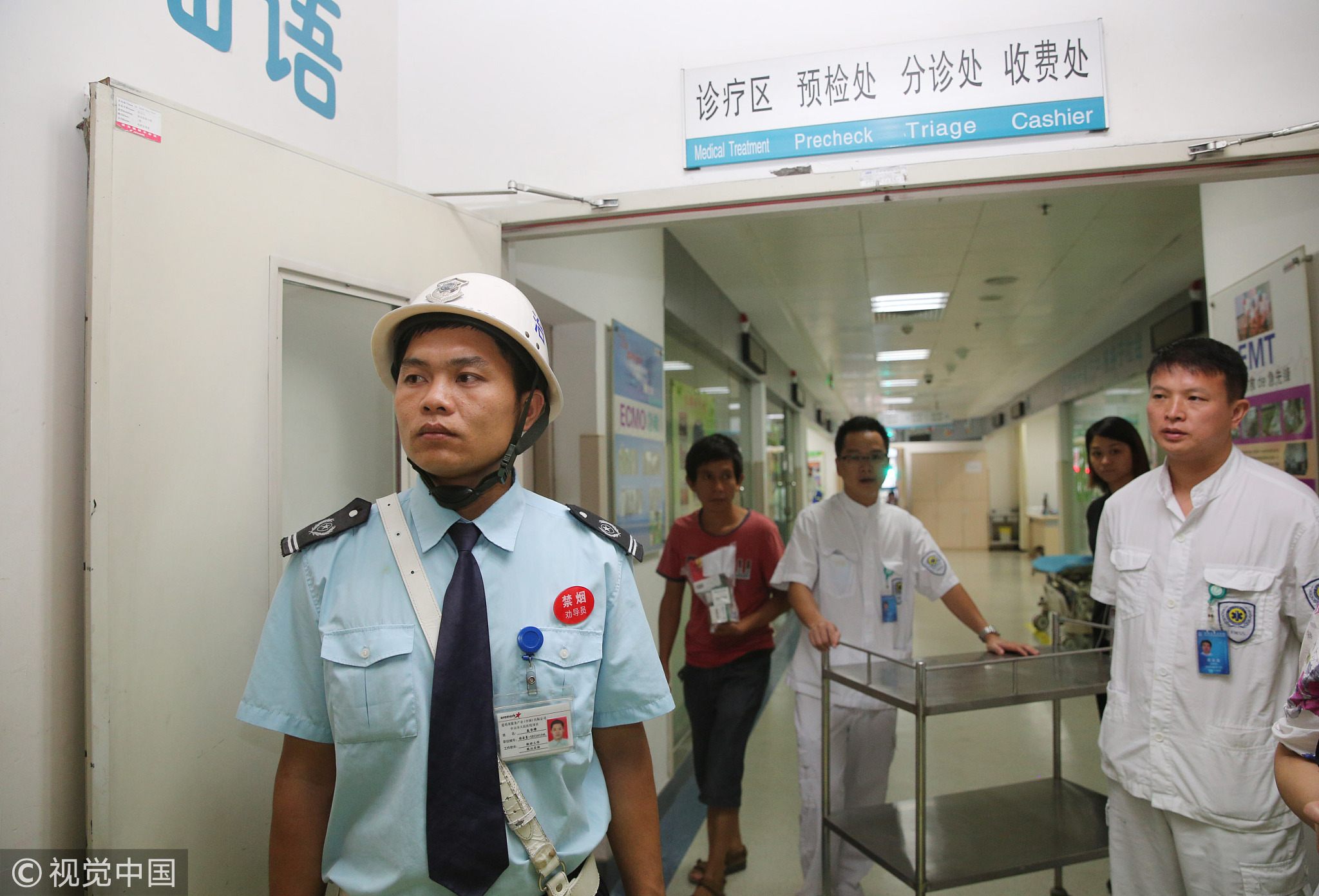
China
13:59, 15-Oct-2018
Public outcry over Chinese gynecologist beaten by patient's family
Updated
13:12, 18-Oct-2018
Liao Yunyi
01:37

The latest case of violence between patients and doctors – called the “Yi Nao” phenomenon – has sparked public outcry across Chinese social media.
The latest victim is a gynecologist at the Peking University First Hospital in Beijing who was assaulted by a pregnant patient and two disgruntled family members on September 22.
One of the patient's family members, the husband identified as a 46-year-old surnamed Zheng by local police, was criminally detained on October 13. Another member, identified as a 19-year-old woman, was granted bail, pending trial as the investigation continues, said the Xicheng District police in a statement.

A patient's family member climbed atop a hospital building in Zhuhai City, Guangdong Province to demand compensation from the hospital on Feb. 28, 2012. /VCG Photo
A patient's family member climbed atop a hospital building in Zhuhai City, Guangdong Province to demand compensation from the hospital on Feb. 28, 2012. /VCG Photo
The doctor, surnamed He, was beaten after he declined to perform an elective C-section on a 44-year-old pregnant patient.
His colleague, another doctor surnamed Zhan, said in a post on Weibo, China's equivalent of Twitter, that it was because there was no medical indication for the elective procedure.
Security footage from the hospital show Dr. He being punched and kicked in the head and stomach by the patient's family members, leaving him with multiple fractures, according to his colleague.

"Anti-violence" drills were carried out to prevent "Yi Nao" in Xiangyang City, central China's Hubei Province by guards at a local hospital. /VCG Photo
"Anti-violence" drills were carried out to prevent "Yi Nao" in Xiangyang City, central China's Hubei Province by guards at a local hospital. /VCG Photo
The incident has evoked public fury and was widely condemned by the hospital officials and other Chinese medical practitioners.
In a statement released on October 13, the Chinese Physicians Association stressed zero tolerance towards "Yi Nao," and called on the police department to take strong measures in investigating the case, and uphold the latest regulations aimed at curbing and preventing doctor-patient violence by the Chinese State Council, which took effect on October 1.
Medical disturbances and tension in doctor-patient relationships remain an epidemic in China's healthcare system, according to the Paper.

Guards can be seen mediating doctor-patient relationships and protecting doctors from violent disturbances at the Zhongshan People's Hospital in south China's Guangzhong Province. /VCG Photo
Guards can be seen mediating doctor-patient relationships and protecting doctors from violent disturbances at the Zhongshan People's Hospital in south China's Guangzhong Province. /VCG Photo
Medical professionals often face abuse and threats, and are often the target of a patient's anger or distrust – which usually stems from perceived medical malpractice but there can be other reasons.
The risk of violence in the workplace is considered a common dilemma for healthcare providers and has had a significant impact on the future generations of doctors.
A nationwide study published in The Lancet in 2016 cited the phenomenon as the main reason interest in medicine as a profession has declined.
The study - which was on the overall trends of Chinese medical graduates - found that the proportion of physicians aged 25 to 34 had decreased from 31.3 to 22.6 percent from 2005 to 2014.
It confirmed a high attrition rate among medical graduates and physicians in China, and suggested a chronic shortage of medical doctors in certain specialties and in rural areas could lead to major chronic care issues for China's aging society if the pattern continues.

SITEMAP
Copyright © 2018 CGTN. Beijing ICP prepared NO.16065310-3
Copyright © 2018 CGTN. Beijing ICP prepared NO.16065310-3